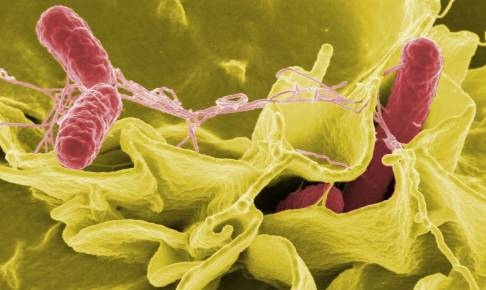Zoonotic diseases in humans and foodborne outbreaks decreased in 2020 in EU
According to the European Food Safety Authority (EFSA) and the European Centre for Disease Prevention and Control (ECDC) results based on the annual EU One Health zoonosis report, notifications for all zoonoses except trichinellosis and yersiniosis decreased in 2020 compared to 2019.
The report summarizes the outcomes of zoonoses surveillance operations conducted in 2020 in 27 EU Member States and 9 non-Member States. In the EU, the proportionate decline in reporting rates ranged from 52.6% for brucellosis to 7.1% for listeriosis. Researchers recognized the COVID-19 pandemic's influence on Europe's extraordinary decline in reported zoonotic infections in humans. Still, the EU notification rate for trichinellosis and yersiniosis increased by 39.1% and 6.0%, respectively, in 2020 compared to 2019.
Campylobacteriosis remained the most frequently reported zoonosis in 2020, as it has been since 2005. It accounted for more than 60% of all reported cases in 2020, totaling 120 946 instances, up from more than 220 000 the previous year. It was followed by other bacterial illnesses, including salmonellosis, which afflicted 52 702 persons in 2020 compared to 88 000 in 2019, yersiniosis which affected 5 668 persons, and STEC infections which affected 4 446 persons. The fifth most often reported zoonosis was listeriosis (1 876 cases). Additionally, the number of reported foodborne outbreaks decreased by 47%.
The severity of the diseases was determined descriptively using hospitalizations and outcomes of reported case. Listeriosis and West Nile virus infection were the two most severe infections, with the greatest case fatality and hospitalization rates. Almost all reported cases of these two diseases were hospitalized. Around one in seven and one in eight confirmed listeriosis and West Nile virus cases with available data resulted in death.
Additionally, the study tracks foodborne outbreaks in the EU. In 2020, 3 086 foodborne outbreaks were recorded. Salmonella remained the most commonly identified pathogen, accounting for around 23% of outbreaks. S. enteritidis was responsible for the majority (57.9%) of Salmonella outbreaks reported in food. The three food vehicles most often implicated in outbreaks of foodborne salmonellosis with good evidence were eggs and egg products, pig meat and products thereof, and bakery items.
According to experts from EFSA and ECDC, two events influenced the gathering of data and associated information by 2020 Member States: the pandemic of Coronavirus Disease 2019 (COVID-19) and the United Kingdom's exit from the European Union.
Source:






















